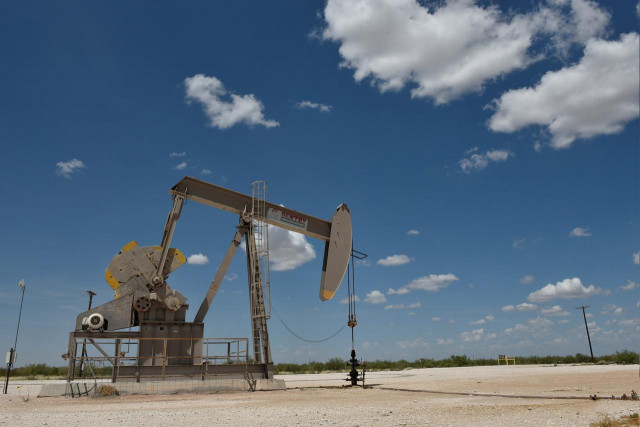Oil rallies on Gulf tensions, output cuts
Prices have suffered one of their most tumultuous weeks ever

Prices have suffered one of their most tumultuous weeks ever. PHOTO: REUTERS
Brent crude was up $1.78, or 8.7%, at $22.15 a barrel by 0940 GMT. US crude rose $1.87, or 13.6%, at $15.65 a barrel.
Oil prices have suffered one of their most tumultuous weeks ever. The expiring front-month US contract on Monday fell into negative territory for the first time as traders paid buyers to take crude off their hands given a lack of storage space for the current supply glut.
So far this year, Brent has lost roughly two-thirds of its value.
Concerns about the collapse in demand because of travel restrictions to contain the coronavirus and a shortage of space to store oil still dominate, but analysts say they do not expect a repeat of Monday’s price shock.
The rally on Thursday followed an announcement from President Donald Trump he had instructed the US Navy to fire on any Iranian ships that harass it in the Gulf, although he added later he was not changing the military’s rules of engagement.
“This ratchets up tensions once again between the US and Iran. However, given the glut we have in the oil market, it is difficult to see this offering lasting support to the market, unless the situation does escalate further,” ING’s head of commodities strategy Warren Patterson said.
Output cuts by producers also supported prices. Kuwait began reducing oil supply to the international market without waiting for the deal agreed by major oil exporting countries to take effect on May 1.
The Organisation of the Petroleum Exporting Countries (OPEC), Russia and other oil producing nations, known as OPEC+, agreed this month to cut output by a record amount, representing around 10% of global supply, to support oil prices.
“It is questionable that bringing forward the planned output restraint by a week would make a material difference, especially as no demand consolidation is anticipated in the current quarter,” PVM Oil Associates analyst Tamas Varga said.
In addition to the OPEC+ deal, other producers are also pledging reductions. Oklahoma’s energy regulator said companies could shut wells without losing their leases. The state is the fourth-largest oil producer in the United States.
Data on Wednesday showed US crude inventories rose by 15 million barrels in the week to April 17 to 518.6 million barrels, putting them within striking distance of an all-time record of 535 million barrels set in 2017.



















COMMENTS
Comments are moderated and generally will be posted if they are on-topic and not abusive.
For more information, please see our Comments FAQ